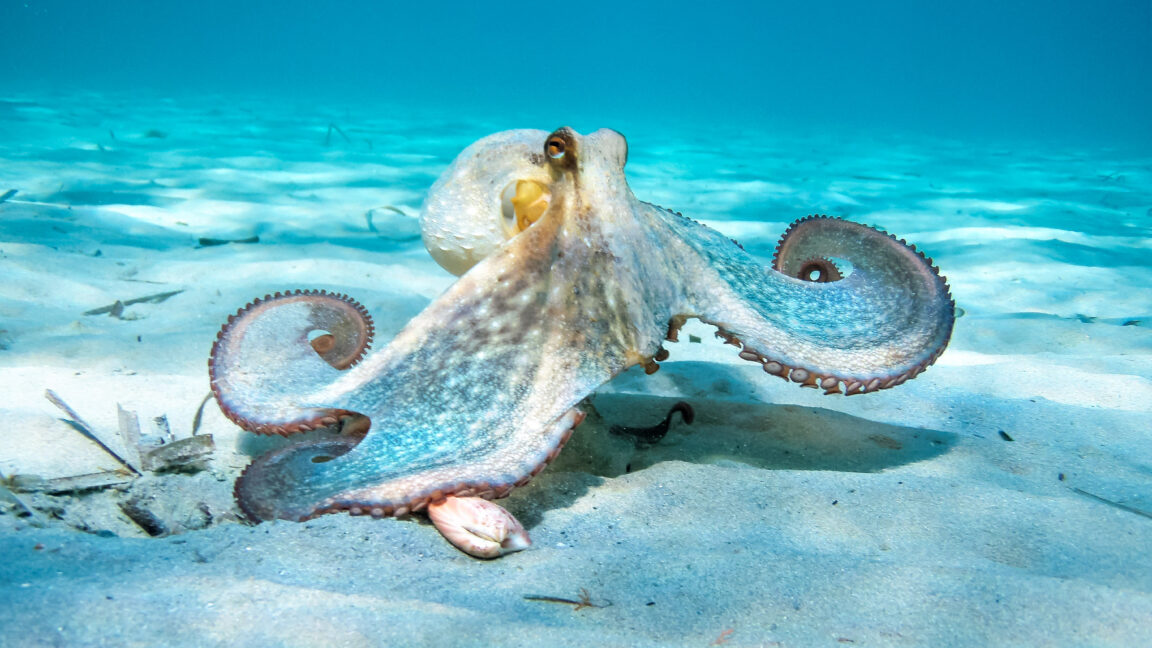9 arms, no drawback
In 2021, researchers from the Institute of Marine Analysis in Spain used an underwater digital camera to observe a male Octopus vulgaris, or frequent octopus. On its left facet, three arms had been intact, whereas the others had been decreased to uneven, stumpy lengths, sharply bitten off at various factors. Though the researchers didn’t witness the damage itself, they noticed that the entrance proper arm—often known as R1—was regenerating unusually, splitting into two separate limbs and giving the octopus a complete of 9 arms.
“On this particular person, we consider this situation was a results of irregular regeneration [a genetic mutation] after an encounter with a predator,” explains Sam Soule, one of many researchers and the primary writer on the corresponding paper lately revealed in Animals.
The researchers named the octopus Salvador on account of its bifurcated arm coiling up on itself like the 2 upturned ends of Salvador Dali’s moustache. For 2 years, the group studied the cephalopod’s habits and located that it used its bifurcated arm much less when doing “riskier” actions reminiscent of exploring or grabbing meals, which might drive the animal to stretch its arm out and expose it to additional damage.
“One of many conclusions of our analysis is that the octopus probably retains a long-term reminiscence of the unique damage, because it tends to make use of the bifurcated arms for much less dangerous duties in comparison with the others,” elaborates Jorge Hernández Urcera, a lead writer of the research. “This concept of lasting reminiscence delivered to thoughts Dalí’s well-known portray The Persistence of Reminiscence, which in the end grew to become the title of the paper we revealed on monitoring this specific octopus.”
Whereas the octopus acted extra protecting of its additional limb, its nervous system had tailored to utilizing the additional appendage, because the octopus was noticed, after a while recovering from its accidents, utilizing its ninth arm for probing its atmosphere.
“That nine-armed octopus is an ideal instance of simply how adaptable these animals are,” Pelled provides. “Most animals would wrestle with an uncommon physique half, however not the octopus. On this case, the octopus had a bifurcated (break up) arm and nonetheless used it successfully, similar to some other arm. That tells us the nervous system didn’t deal with it as a mistake—it discovered methods to make it work.”
Kenna Hughes-Castleberry is the science communicator at JILA (a joint physics analysis institute between the Nationwide Institute of Requirements and Know-how and the College of Colorado Boulder) and a contract science journalist. Her principal writing focuses are quantum physics, quantum know-how, deep know-how, social media, and the range of individuals in these fields, significantly ladies and folks from minority ethnic and racial teams. Comply with her on LinkedIn or go to her web site.
